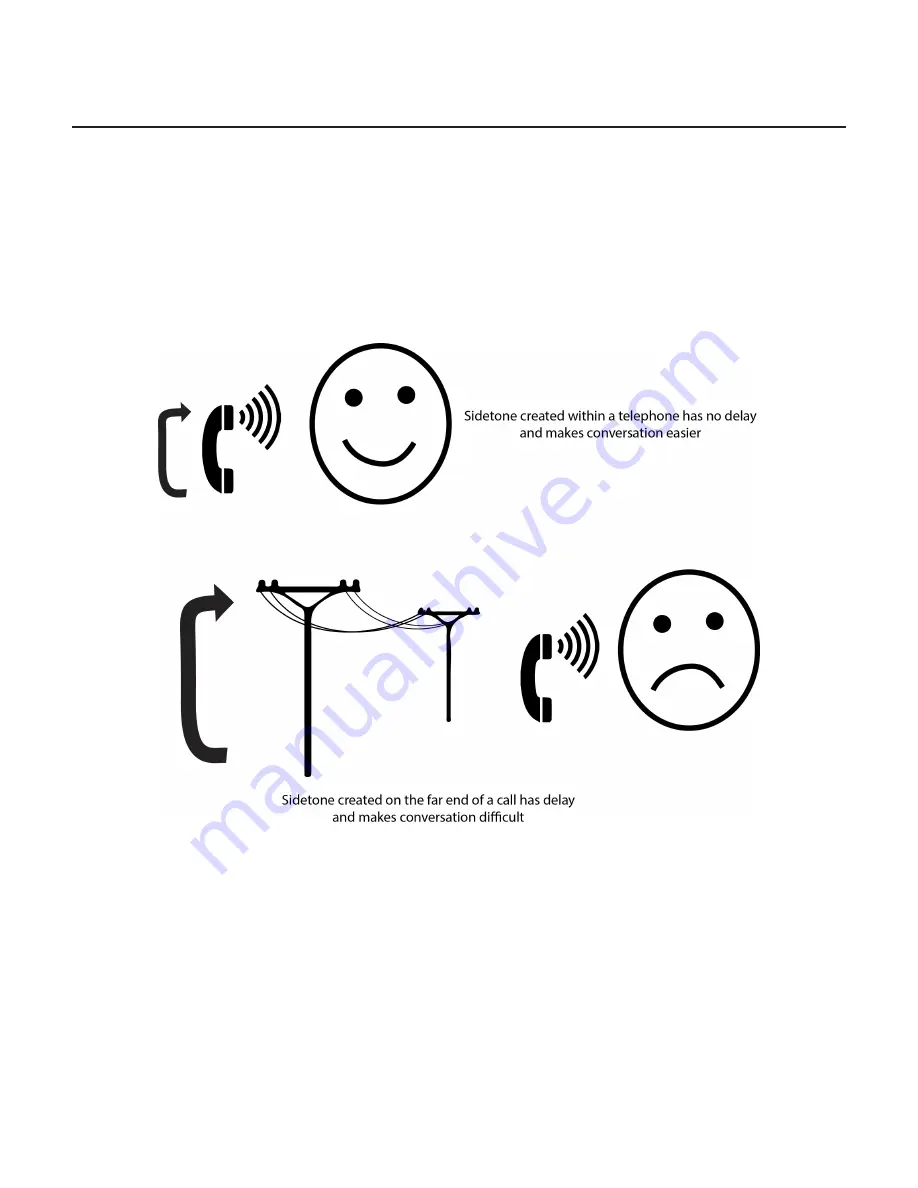
55
xIV.
WHy do I Hear Hear Myself Myself?
MIx-MInus and elIMInatIng ecHo
Studio telephone integration is a two-way process. The caller must send his audio to the studio, but also receive
a return feed that allows him to interact with other sources, like a host. An important element of voice telephony
involves allowing a speaking party to hear his own voice in his own earpiece. This sidetone provides a speaker the
comfort of knowing his voice is getting through, and makes two-way communication flow more easily.
But for several reasons, telephone sidetone is always generated locally within the speaker’s equipment, rather than
on the far end of the call. This is because humans have a very hard time handling even the smallest delay in this
sidetone signal. In testing, we find that any delay over around 10mS starts to have an effect called “slapback” where
the speaker is unable to maintain conversation and begins to halt and stutter.
Even in “old-fashioned” analog telephone circuits, it’s possible to create a 10mS round-trip delay on a long distance
call. Now add in the requirement that modern VoIP-based systems have inherent windowing and buffer delays,
and its easy to pile up over 100mS round-trip on a call. A delay of this length will typically not impede interactive
conversation, but will certainly create an intolerable “slapback” environment if the caller hears his own voice
delayed.
Summary of Contents for VH2
Page 1: ...Product Manual ...
















































